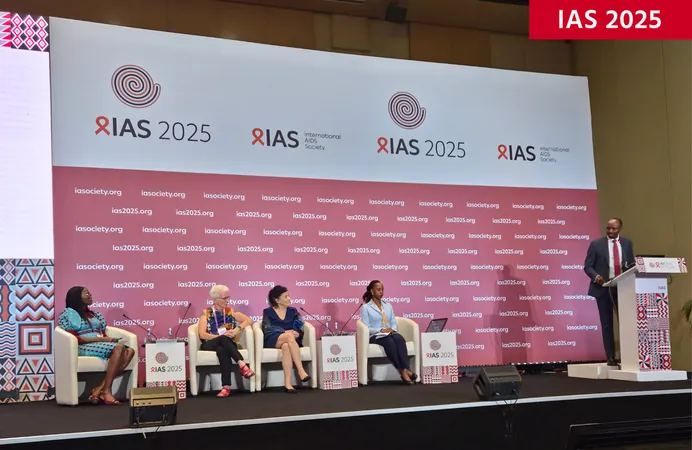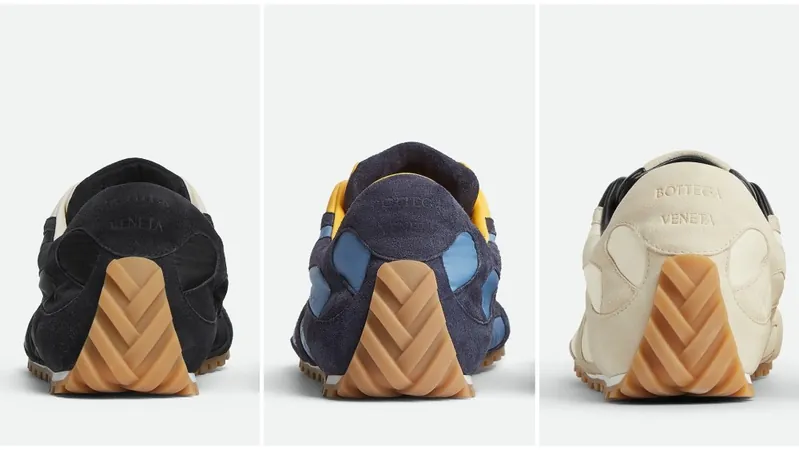
Venetoclax Combined with Rituximab: A Game Changer for Immune Recovery in Chronic Lymphocytic Leukemia!
2024-09-27
Author: Wei Ling
Recent groundbreaking research has uncovered that the combination of venetoclax and rituximab (VR) not only effectively tackles relapsed or refractory chronic lymphocytic leukemia (CLL) but also plays a pivotal role in supporting long-term immune system recovery. This significant study, published in the peer-reviewed journal HemaSphere, highlights the power of VR in restoring immune function, compared to conventional treatments like bendamustine plus rituximab (BR).
As part of the extensive phase 3 MURANO trial, researchers analyzed data from 389 patients diagnosed with relapsed or refractory CLL. These patients were randomly chosen to receive VR for a two-year period (daily venetoclax along with monthly rituximab for the first six months) or BR for six months. Notably, out of this cohort, 130 patients in the VR group and 134 in the BR group completed their treatments without any sign of disease progression.
The researchers meticulously monitored various immune parameters over time, measuring the levels of serum immunoglobulins and the counts of B cells, T cells, and natural killer (NK) cells. The analysis showed an initial decline in immunoglobulin levels during VR treatment; however, these levels rebounded following the cessation of therapy.
Specifically, median immunoglobulin G (IgG) levels decreased from 6.30 g/L to 5.80 g/L during treatment but returned to 6.20 g/L by 24 months post-treatment. Median immunoglobulin M (IgM) levels demonstrated a similar trend, dropping significantly during treatment but recovering beyond baseline levels after 24 months. Furthermore, IgA levels saw a steady increase from 0.46 g/L at baseline to 0.85 g/L at the 24-month mark, providing strong evidence of immune recovery.
In stark contrast, patients receiving the BR regimen did not exhibit significant fluctuations in immunoglobulin levels throughout the study, though all immunoglobulin types remained above baseline levels at both the 12 and 24-month follow-ups.
The impact on T-cell and NK-cell populations was noted in both treatment groups. In the VR cohort, CD19-positive (CD19+) B cells were significantly depleted during treatment, with recovery commencing approximately one year post-treatment and stabilizing around the 30-month mark. Both CD4-positive and CD8-positive T-cell ratios remained stable throughout the entire study.
Importantly, the trial also reported low occurrences of severe infections in both treatment groups. Patients on VR experienced grade 3 or higher infections at a rate of 17.5%, while this rate was slightly higher at 21.8% for the BR group. Interestingly, infection rates varied concerning minimal residual disease (MRD) status, with those showing MRD positivity experiencing higher rates of grade 1-2 infections.
Despite prior studies indicating increased infection risks with certain therapies like acalabrutinib or ibrutinib in relapsed or refractory CLL, the overall low rate of severe infections following VR treatment showcases its favorable tolerability profile.
The implications of this research are profound, as it underscores that the VR regimen not only combats disease progression but also facilitates immune recovery, paving the way for new perspectives in treating CLL.
In conclusion, the findings highlight the exceptional potential of venetoclax plus rituximab, redefining the treatment landscape for patients with CLL and promising a brighter future for immune health post-therapy. Are we witnessing the dawn of a new era in CLL treatment? Only time will tell!




 Brasil (PT)
Brasil (PT)
 Canada (EN)
Canada (EN)
 Chile (ES)
Chile (ES)
 Česko (CS)
Česko (CS)
 대한민국 (KO)
대한민국 (KO)
 España (ES)
España (ES)
 France (FR)
France (FR)
 Hong Kong (EN)
Hong Kong (EN)
 Italia (IT)
Italia (IT)
 日本 (JA)
日本 (JA)
 Magyarország (HU)
Magyarország (HU)
 Norge (NO)
Norge (NO)
 Polska (PL)
Polska (PL)
 Schweiz (DE)
Schweiz (DE)
 Singapore (EN)
Singapore (EN)
 Sverige (SV)
Sverige (SV)
 Suomi (FI)
Suomi (FI)
 Türkiye (TR)
Türkiye (TR)
 الإمارات العربية المتحدة (AR)
الإمارات العربية المتحدة (AR)